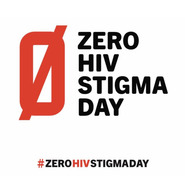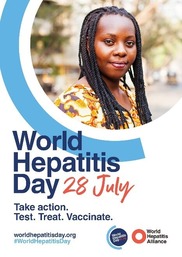|
|
|
|
|
|

July is Fibroid Awareness Month, a time dedicated to raising awareness and supporting the millions of women who are suffering from uterine fibroids.
Fibroids are muscular tumors that grow in the uterus of women of childbearing age and are almost always benign. While most fibroids may not cause symptoms, some may cause abdominal pain, heavy bleeding, enlargement of the lower abdomen, frequent urination, complications with pregnancy, reproductive problems, and more.
According to the HHS Office on Women’s Health, about 20-80% of women develop fibroids by the time they reach age 50. Additionally, a study done by researchers at the University of Michigan found that Black women are diagnosed with fibroids roughly three times as frequently as white women. Black women also develop fibroids earlier in life and tend to experience larger and more numerous fibroids that cause more severe symptoms.
Potential structural and social determinants of health factors driving fibroid disparities still need further research. Participating in clinical trials can also help doctors learn more about safe treatments for fibroids. Visit the Food and Drug Administration (FDA) Office of Women's Health Diverse Women in Clinical Trials webpage to learn more about participating in a clinical trial and to find a study.
Also visit the FDA Office of Women’s Health website to access their fact sheet on uterine fibroids that explains what uterine fibroids are, their symptoms, and other important information. The fact sheet is available in multiple languages.
|

Zero HIV Stigma Day is an international awareness campaign that brings attention to the persistent levels of stigma experienced by people living with and affected by HIV. Zero HIV Stigma Day began in 2022 as joint initiative of UK-based sexual health charity NAZ and the International Association of Providers of AIDS Care (IAPAC), in collaboration with the Global HIV Collaborative and Fast-Track Cities Institute.
This movement aims to unite people, communities, and countries to help raise awareness about HIV stigma and ways to end it. HIV stigma refers to irrational or negative attitudes, behaviors, and judgments towards people living with or at risk of HIV. Experiencing HIV stigma can impact a person’s emotional wellbeing and mental health.
A study done by the Centers for Disease Control and Prevention (CDC) found that Hispanic/Latino people with HIV commonly reported experiencing HIV stigma and health care discrimination. Among Hispanic persons with HIV, Hispanic women and Hispanic persons with HIV who identified as AI/AN experienced the highest levels of HIV stigma. The study also found that nearly one in four Hispanic persons with HIV experienced health care discrimination.
CDC’s Let’s Stop HIV Together campaign highlights the role that each person plays in stopping HIV stigma and gives voice to people living with HIV, as well as their friends and family. Talking openly about HIV can help normalize the subject and provides opportunities to correct misconceptions. Use CDC’s Let’s Stop HIV Together stigma language guide to learn how to be mindful of how you talk about HIV and people living with HIV.
|

World Hepatitis Day aims to raise awareness about the global impact of viral hepatitis and bring about significant changes that facilitate prevention, diagnosis, and treatment.
Viral hepatitis—hepatitis A, hepatitis B, hepatitis C, hepatitis D, and hepatitis E—affect millions of people worldwide, causing both acute and chronic liver disease.
According to the World Hepatitis Alliance, someone loses their life to a hepatitis-related illness every 30 seconds. Over 350 million people globally live with hepatitis, with more than 1.1 million lives lost each year to hepatitis B and hepatitis C.
Although viral hepatitis affects millions of Americans nationwide from all social, economic, and racial and ethnic groups, it disproportionately impacts certain populations and communities. For example, the rates of reported hepatitis B-related deaths among non-Hispanic Asian and Pacific Islander persons and non-Hispanic Black persons were 8.5 times and 2.6 times as high as the rate among non-Hispanic white persons, respectively.
HHS created the Viral Hepatitis National Strategic Plan to provide a framework to eliminate viral hepatitis as a public health threat in the United States by 2030. As a part of the Viral Hepatitis Plan, HHS created the Mapping Hepatitis Elimination in Action tool to track the growing number of hepatitis elimination projects that have been established across the United States and help connect and raise awareness of nationwide initiatives.
To learn how you can get involved in the fight against viral hepatitis or to download campaign materials and resources, visit the World Hepatitis Day website.
|

While swimming is a fun, healthy way to stay physically active and spend quality time with family and friends during the summer, pools can be dangerous for children. That’s why it’s important to know how to keep them safe in and around the water.
As the summer swim season kicks off with the opening of pools nationwide, the U.S. Consumer Product Safety Commission released its annual drowning and submersion report.
The report shows that fatal drownings for children under the age of 15 increased 12% in 2021. Drowning remains the leading cause of death among children under the age of 5, with African American children at a disproportionately higher risk of drowning.
Out of drowning fatalities where race was specified among children under the age of 15, African American children made up the second highest percentage of all victims at 23%. For drowning fatalities among children ages 5 to 14, African American children accounted for 45% of these deaths. These numbers highlight the importance of reaching historically excluded communities with water safety information and support.
Learn how to keep children safe in and around water by implementing these simple pool safety steps and by taking the Pool Safely Pledge.
Visit CDC’s Drowning Prevention webpage to learn more about risk factors and find prevention resources.
|

The OMH Knowledge Center is sharing a collection of recent articles focused on the mental health of racial and ethnic minority populations. The collection's topics touch on anxiety and depression during the COVID-19 pandemic, immigrant stress, and maternal mental health. Many of these resources are available online for free.
You can access this collection through the OMH Knowledge Center online catalog.
|
|
|
|
|
|
|
|